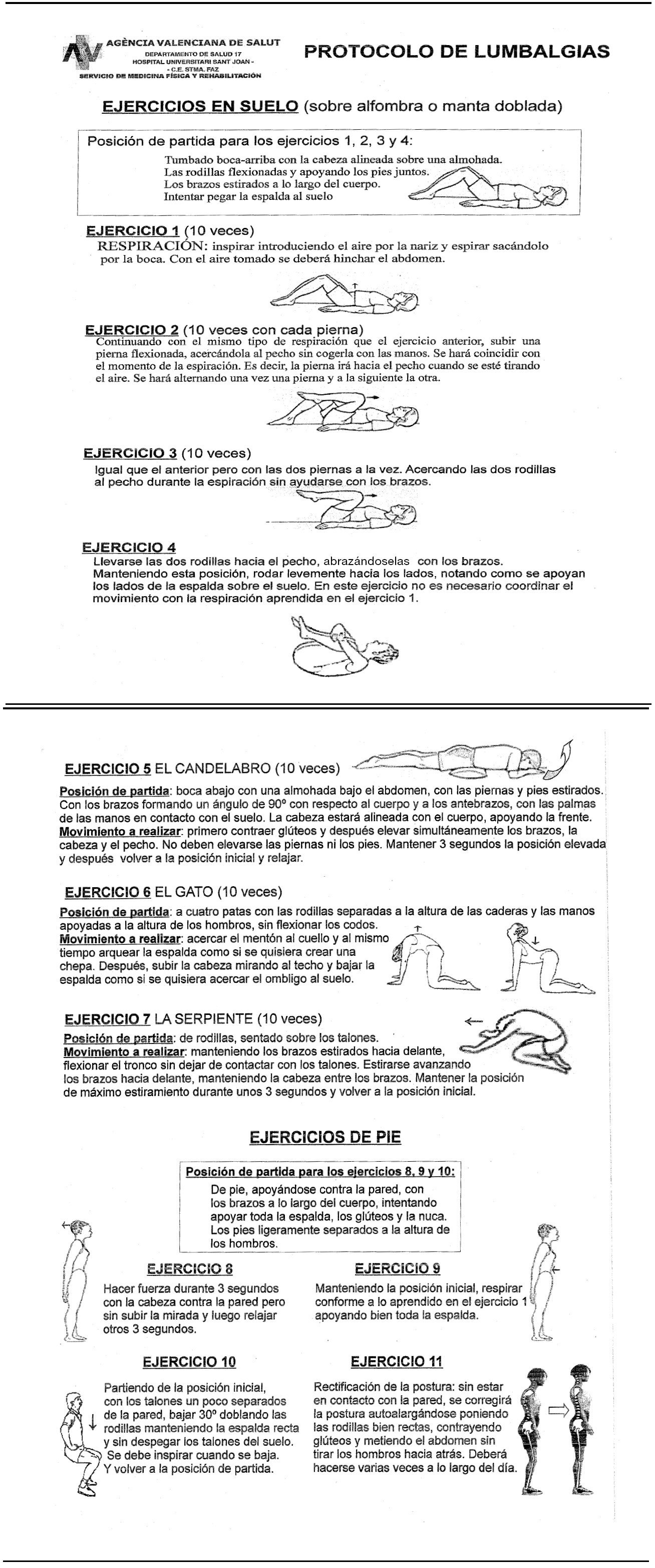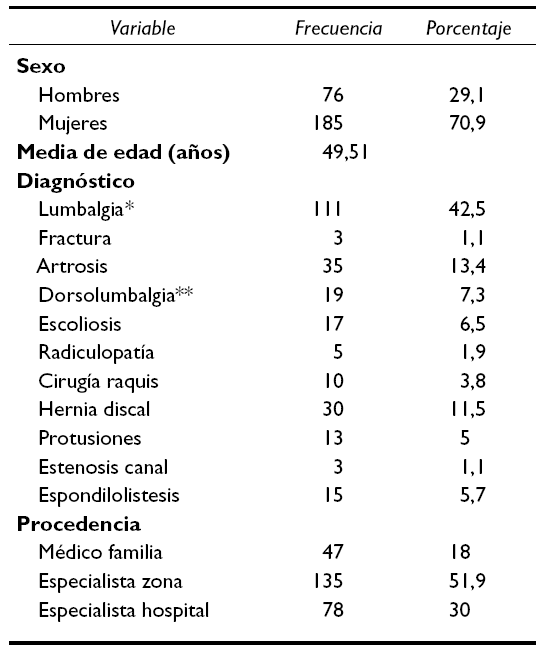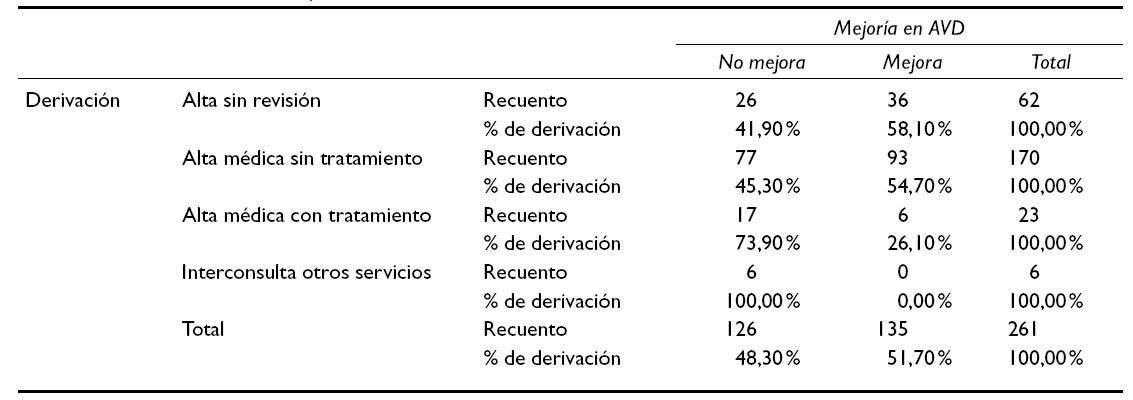Introducción. Las escuelas de espalda son una de las intervenciones utilizadas en los programas de rehabilitación. El objetivo de nuestro estudio es describir las características del programa de espalda del Hospital de San Juan y valorar su eficacia.
Material y métodos. Se incluyeron 897 pacientes con dorsalgia y/o lumbalgia, durante el período de enero de 2004 a diciembre de 2006. El programa se desarrolló en 6 sesiones colectivas a lo largo de 3 meses. Se completaron los tests de la ganancia de flexión lumbar protegida (medida como la distancia en centímetros manos-suelo) y la mejoría subjetiva en actividades de la vida diaria (AVD) (nada, insuficiente o suficiente).
Resultados y conclusiones. Completaron el protocolo 261 pacientes. El programa mejora el dolor raquídeo medido con la escala visual analógica (EVA) del dolor en 0,61 mm (intervalo de confianza [IC] 95 %: 0,32-0,9) y la ganancia de flexión lumbar protegida en 5,13 cm (IC 95 %: 4,21-6,05). La mayoría de los pacientes mejoraron de forma suficiente (51,7%) sin requerir ningún otro tipo de tratamiento fisioterápico. Estas mejorías encontradas fueron estadísticamente significativas (p < 0,000).
Introduction. Back school is one of the interventions used in the Rehabilitation programs. The aim of our study is to describe the characteristics of a program of rachialgia of San Juan’s Hospital, as well as its effectiveness.
Methods. Eight-hundred and ninety-seven patients with dorsalgia and/or lumbalgia were included, during the period January 2004-December 2006. The program was developed in 6 collective sessions of three months’ duration. The test of Visual Analogue Scale of the pain, the gain in flexion lumbar protected (measured in cm as the distance between hands and ground) and the subjective improvement in activity daily life (nothing, inadequate or sufficient) were completed.
Results and conclusions. Two-hundred and sixty-one patients completed the protocol. The program improved 0.61 mm (IC 95 % ± 0.29) of Visual Analogue Scale measuring spinal pain; 5.13 cm (IC 95 % ± 0.92) improvement in protected lumbar flexion. Most patients improved sufficiently (51.7 %), without requiring any other type of physiotherapy treatment. These improvements were statistically significant (p < 0.000).
Artículo
Comprando el artículo el PDF del mismo podrá ser descargado
Precio 19,34 €
Comprar ahora









